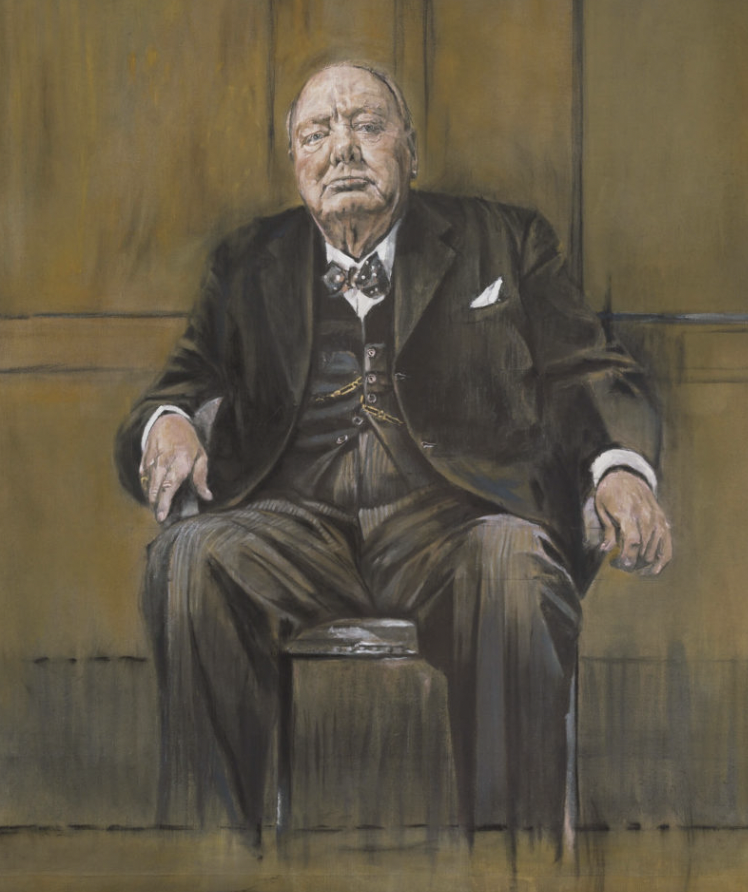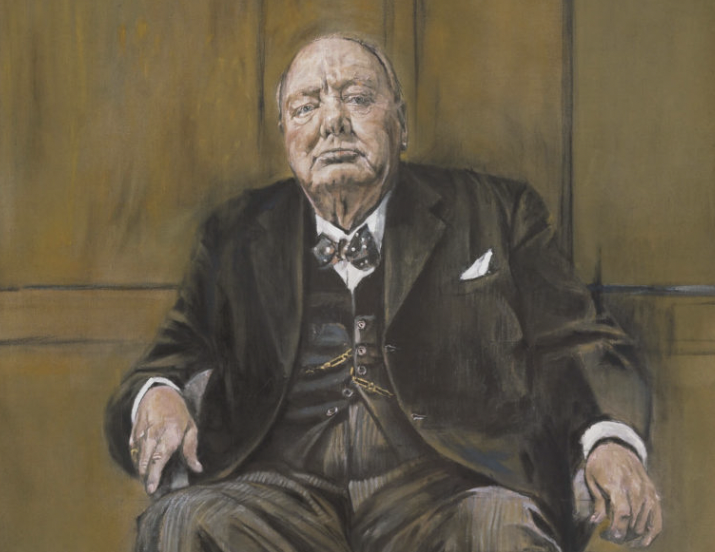I’m currently watching “The Crown.” For all its magnificence and historical accuracy, I’ve found it to be a difficult series to watch. I lay the blame for my viewing issues entirely on my own doorstep. I prefer stories with a strong element of drama, and The Crown is too faithful to historical accounts to be as dramatic as I’d like it to be.
Graham Sutherland’s Portrait of Winston Churchill
While I’ve been watching The Crown for a little more than two months now (yes, that’s how slow it’s gotten for me), I was quite drawn to the depiction of Churchill’s interactions with Graham Sutherland.
When Churchill looked at the portrait, he said, “The portrait is a remarkable example of modern art. It certainly combines force and candour. These are qualities which no active Member of either House can do without or should fear to meet.”
One might think that Churchill’s statement meant that he liked his portrait. And yet, the fact was that he hated it so much that soon after it arrived at his residence, his wife/secretary got the portrait burnt. If the depiction of their interactions in The Crown is to be believed, over the course of painting the portrait, the two men had become friends, and when Churchill first laid eyes on his portrait by Sutherland, he felt cheated. He didn’t think that the portrait did him justice, as it made him look like a “down-and-out drunk.” He characterized the portrait as “filthy” and “malignant.”
Sutherland and Portraiture
Sutherland was a modernist who usually did landscapes. Churchill, too, dabbled in painting. And that, I believe, is an explosive combination. Add to this mix the fact that Churchill hadn’t sought out Sutherland, and an explosion is certain!
I’ve been a portrait artist as well as a caricaturist, and while I don’t actively seek out portraiture commissions, once in a while, I find myself working on one – and I can relate to Sutherland’s predicament.
Portraiture, you see, is done for an audience. It must meet the unsaid, undocumented, unexpressed demands of the audience. The subject of a portraiture often expects a realist to become a romanticist. Regardless of who commissioned it, if the subject of the portrait is alive, they want to see themselves portrayed at “they” think, they look. And the self-image of a person, often like their self-concept, is mostly better than other’s image/concept of them. This is a psychological truth, and a realist in the artistic sense of the word, for this reason, is ill-suited to create portraits.
Let us first figure out what each of these terms mean.
Realism
Realism is the artist’s attempt to render the subject’s visage faithfully and accurately. No exaggeration, no improvements, no attempt to hide the ugly or unsightly, nor to accentuate the beautiful. It is photographic in its presentation. Gustave Coubert is considered to be the father of Realism.
Romanticism
Romanticism highlighted the supremacy of intuition in creating and feeling art. The romanticists brought into their works, the fantastical but sublime goodness of the heroic, the beauty, and the charm – and imbued their works with it.
I think, romanticism may have left the artists feeling overwhelmed with its sugary sweetness, and they felt driven by the need to show reality. This need might’ve been exacerbated by the extreme changes that were sweeping Europe and the world back then (1750 to 1800), including the French Revolution (1789-1799).
Now let us return to portraiture.
In portraiture, the terms “realistic/realist” is often “incorrectly” used for a person who produces a good likeness of a person. In this sense, I am a realist too. But artistically speaking I am not. In fact, when I do portraits (and I only do them when I’ve been left no escape-route,) I turn into a romanticist.
Questions I ask as an Artist?
Graham Sutherland’s portrait of Churchill ended up being cremated by his wife, because Sutherland refused to budge from the realistic treatment of his subject. I wonder what made him accept that commission. He may have taken it up for multiple reasons – one of them, and them most plausible one, could’ve been that when the Government asks you to do something, you do it. I don’t think he was in want of money, as by then he was already a much celebrated realist (in the artistic sense of the word). The question is, why did he make Churchill’s portrait as he did? Actually, this question spawns a few other questions.
- Could he have made a kinder, more forgiving portrait, if he wanted to?
- Did he actually make a kinder, more forgiving portrait that was just not kind/forgiving enough?
- Was it that in his sittings, Churchill appeared to be ill and grumpy?
- Why did he not let Churchill look at the work-in-progress? (I think I know the answer to that.)
But you know what he painted, because a picture survived. As did one of his studies of Churchill’s face – a portrait was with a private collection for seventy years and was recently sold for 800K British Pounds.
Meanwhile, the following portrait was forever lost to history.

Winston Churchill hated this portrait of his which was done by noted realist Graham Sutherland.
Image Credits: Artist Graham Sutherland (1954) | Image Source: Wikipedia.


Leave a Reply